Hunting the genes in male‐pattern alopecia: how important are they, how close are we and what will they tell us?
April 2016
in “Experimental Dermatology”
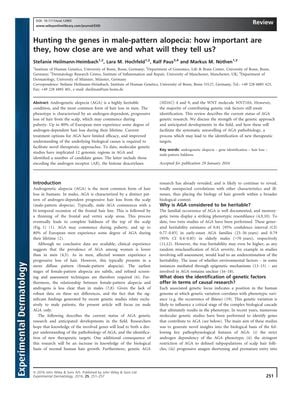
TLDR Genes play a significant role in male-pattern baldness, and understanding them could lead to new treatments and insights into related health issues.
The 2016 document reviewed the genetic research on androgenetic alopecia (AGA), indicating it is highly heritable with twin studies showing heritability estimates of 0.81 and 0.79 for early-onset and elderly males, respectively. Twelve genomic regions have been implicated in AGA, with the strongest association found on the X-chromosome region flanked by AR and EDA2R. The review underscores the importance of genetic research for understanding AGA's pathobiology and identifying new therapeutic targets, as well as its potential to reveal correlations with other illnesses. It acknowledges that while common variants with low-to-moderate effect sizes are involved, the role of rare variants with higher effect sizes is not excluded. The document calls for further studies to clarify the genetic variations' connection to AGA development and suggests that genetic findings could lead to new drug targets and provide insights into shared disease mechanisms with other conditions. However, it cautions that drug development from gene targets to market is a lengthy process, often exceeding a decade.
View this study on onlinelibrary.wiley.com →
Cited in this study

research Towards a consensus on how to diagnose and quantify female pattern hair loss – The ‘Female Pattern Hair Loss Severity Index (FPHL-SI)’
New method measures female hair loss: Female Pattern Hair Loss Severity Index (FPHL-SI).
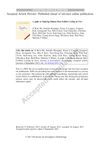
research A Guide to Studying Human Hair Follicle Cycling In Vivo
The document provides a method to classify human hair growth stages using a model with human scalp on mice, aiming to standardize hair research.
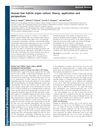
research Human hair follicle organ culture: theory, application and perspectives
Human hair follicle organ culture is a useful model for hair research with potential for studying hair biology and testing treatments.
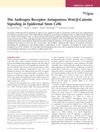
research The Androgen Receptor Antagonizes Wnt/β-Catenin Signaling in Epidermal Stem Cells
Androgen receptor activity blocks Wnt/β-catenin signaling, affecting hair growth and skin cell balance.
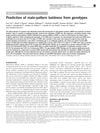
research Prediction of male-pattern baldness from genotypes
Genetic data can predict male-pattern baldness with moderate accuracy, especially for early-onset cases in some European men.

research Evaluation of DNA Variants Associated with Androgenetic Alopecia and Their Potential to Predict Male Pattern Baldness
DNA variants can predict male pattern baldness, with higher risk scores increasing baldness likelihood.

research Persistent Sexual, Emotional, and Cognitive Impairment Post-Finasteride
Finasteride can cause lasting sexual, emotional, and cognitive issues, with varying severity.
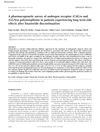
research A Pharmacogenetic Survey of Androgen Receptor (CAG)N and (GGN)N Polymorphisms in Patients Experiencing Long Term Side Effects after Finasteride Discontinuation
Longer CAG and GGN repeats increase alopecia risk, but no significant link to post-finasteride syndrome found.

research Differential effects of caffeine on hair shaft elongation, matrix and outer root sheath keratinocyte proliferation, and transforming growth factor‐β2/insulin‐like growth factor‐1‐mediated regulation of the hair cycle in male and female human hair folliclesin vitro
Caffeine affects hair growth and health differently in men and women.

research Alopecia and its association with coronary heart disease and cardiovascular risk factors: A meta-analysis
People with alopecia are at higher risk for heart disease and have more heart-related risk factors.
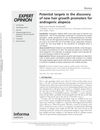
research Potential targets in the discovery of new hair growth promoters for androgenic alopecia
The document concludes that targeting 5α-reductase, the androgen receptor, and hair growth genes, along with using compounds with anti-androgenic properties, could lead to more effective hair loss treatments.

research Investigation of four novel male androgenetic alopecia susceptibility loci: no association with female pattern hair loss
No link found between new male baldness genes and female hair loss.
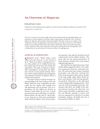
research An Overview of Alopecias
The document explains different types of hair loss, their causes, and treatments, and suggests future research areas.
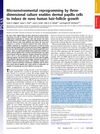
research Microenvironmental reprogramming by three-dimensional culture enables dermal papilla cells to induce de novo human hair-follicle growth
Growing human skin cells in a 3D environment can stimulate new hair growth.
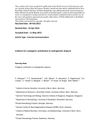
research Evidence for a polygenic contribution to androgenetic alopecia
Hair loss risk is influenced by multiple genes.

research Androgenetic Alopecia: Identification Of Four Genetic Risk Loci And Evidence For The Contribution Of WNT Signaling To Its Etiology
Four genetic risk spots found for hair loss, with WNT signaling involved and a link to curly hair.

research New investigational drugs for androgenetic alopecia
Possible new treatments for common hair loss include drugs, stem cells, and improved transplants.

research Eleven pairs of Japanese male twins suggest the role of epigenetic differences in androgenetic alopecia
Epigenetic differences affect hair loss in identical Japanese male twins.
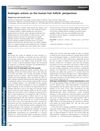
research Androgen actions on the human hair follicle: perspectives
Androgens have complex effects on hair growth, promoting it in some areas but causing hair loss in others, and our understanding of this is still evolving.
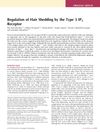
research Regulation of Hair Shedding by the Type 3 IP3 Receptor
The type 3 IP3 receptor is important for controlling hair loss and growth.

research Six Novel Susceptibility Loci for Early-Onset Androgenetic Alopecia and Their Unexpected Association with Common Diseases
Six new genetic regions linked to early hair loss also connect to Parkinson's disease and prostate cancer, possibly leading to new treatments.

research Androgenetic alopecia as an early marker of benign prostatic hyperplasia
Early hair loss may indicate prostate issues.
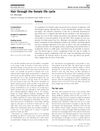
research Hair through the female life cycle
Women's hair generally gets thinner and less dense starting in their mid-thirties, with hair loss becoming more common as they age due to both genetics and environment.
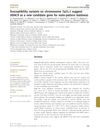
research Susceptibility variants on chromosome 7p21.1 suggest HDAC9 as a new candidate gene for male-pattern baldness
A gene called HDAC9 might be a new factor in male-pattern baldness.

research Evidence of Increased DNA Methylation of the Androgen Receptor Gene in Occipital Hair Follicles from Men with Androgenetic Alopecia
Men with hair loss have more DNA changes in back-of-head hair follicles, possibly protecting them from thinning.

research Female pattern hair loss: beyond an androgenic aetiology?
Estrogen and prolactin may play bigger roles in female hair loss than previously thought.

research Fine mapping of the human AR/EDA2R locus in androgenetic alopecia
Genetic marker rs12558842 strongly linked to male hair loss.
research Common Variants in the Trichohyalin Gene Are Associated with Straight Hair in Europeans
Common variants in the Trichohyalin gene are linked to straight hair in Europeans.

research Androgenetic alopecia and insulin resistance in young men
Hair loss in young men linked to higher risk of insulin resistance and metabolic issues.

research Androgen Receptor Copy Number Variation and Androgenetic Alopecia: A Case-Control Study
No clear link between androgen receptor variation and hair loss, but more research needed.
research A Human Folliculoid Microsphere Assay for Exploring Epithelial– Mesenchymal Interactions in the Human Hair Follicle
This pilot study introduced a novel organotypic assay using human folliculoid microspheres (HFMs) to explore epithelial-mesenchymal interactions in human hair follicles. HFMs, composed of human dermal papilla fibroblasts and outer root sheath keratinocytes within an extracellular matrix, retained key interactions characteristic of human scalp hair follicles. The study demonstrated that HFMs could be used to assess the effects of hair growth-modulatory agents on relevant hair growth markers under simplified in vitro conditions. Additionally, HFMs proved useful for identifying target genes and products for potential hair growth drugs, making them a valuable tool for both basic and applied hair research.
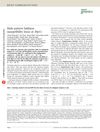
research Male-pattern baldness susceptibility locus at 20p11
Researchers found a new gene area linked to male-pattern baldness, which, along with another gene, significantly increases the risk of hair loss in men.

research EDA2R Is Associated with Androgenetic Alopecia
EDA2R gene linked to hair loss.
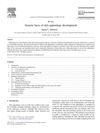
research Genetic basis of skin appendage development
Hair, teeth, and mammary glands develop similarly at first but use different genes later.
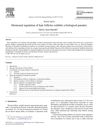
research Hormonal regulation of hair follicles exhibits a biological paradox
Androgens can both stimulate and cause hair loss, and understanding their effects is key to treating hair disorders.
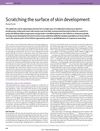
research Scratching the surface of skin development
The document concludes that skin stem cells are important for hair growth and wound healing, and could be used in regenerative medicine.
research Edar Signaling in the Control of Hair Follicle Development
Edar signaling is crucial for proper hair follicle development and function.

research Genetic Variation in the Human Androgen Receptor Gene Is the Major Determinant of Common Early-Onset Androgenetic Alopecia
Genetic variation in the androgen receptor gene mainly causes early-onset hair loss, with maternal inheritance playing a key role.

research The E211 G>A Androgen Receptor Polymorphism Is Associated with a Decreased Risk of Metastatic Prostate Cancer and Androgenetic Alopecia
E211 G>A gene linked to lower risk of severe prostate cancer and hair loss.

research Evaluation and treatment of male and female pattern hair loss
Early diagnosis and treatment, using finasteride, minoxidil, or hair transplantation, improves hair loss outcomes.

research Androgenetic alopecia in men aged 40-69 years: prevalence and risk factors
Hair loss increases with age; alcohol raises risk, more female partners lowers it.

research Early androgenetic alopecia as a marker of insulin resistance
Early hair loss may indicate risk of insulin resistance.

research The Biology of Hair Follicles
Hair follicle biology advancements may lead to better hair growth disorder treatments.
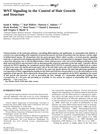
research WNT Signaling in the Control of Hair Growth and Structure
The research shows that a gene called Wnt3 affects hair growth and structure, causing short hair and balding when overactive.
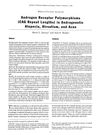
research Androgen Receptor Polymorphisms (CAG Repeat Lengths) in Androgenetic Alopecia, Hirsutism, and Acne
Shorter CAG repeats may cause hair and skin issues, while longer ones may link to acne.
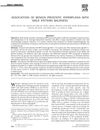
research Association of Benign Prostatic Hyperplasia with Male Pattern Baldness
Men with enlarged prostates often have more severe baldness.
Related
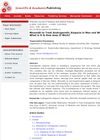
research Minoxidil to Treat Androgenetic Alopecia in Men and Women: What is It & How does It Work?
Minoxidil, originally a blood pressure medication, is effective in treating hair loss in men and women, with different strengths recommended for each.